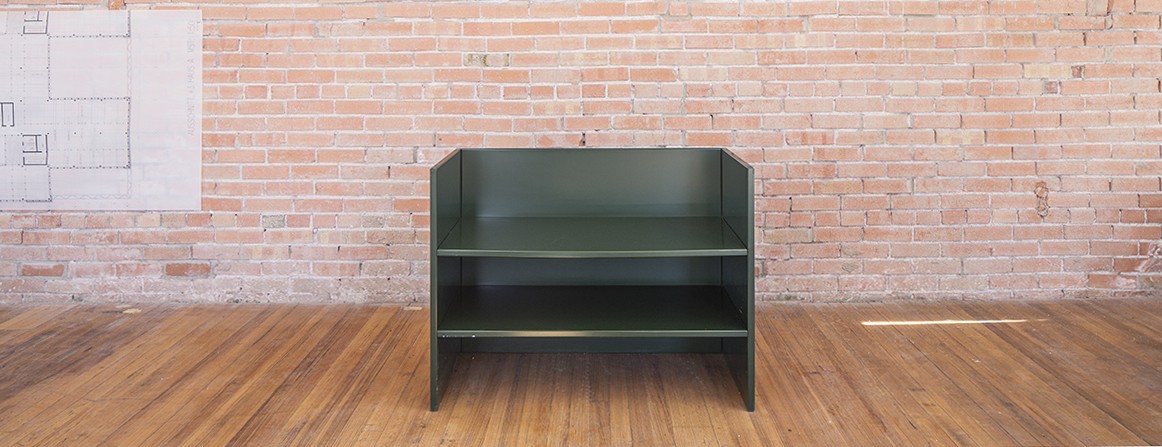

In his 1986 essay, “On Furniture,” Donald Judd opens with the contention that furniture and architecture must be functional, as opposed to art, which is “the assertion of someone’s interest regardless of other considerations.” Judd’s initial designs were made for specific purposes, including sinks for 101 Spring Street and a bed, desks, and chairs for his son and daughter in Marfa, among other pieces to be used by him and his family directly. It was not until 1982 that, as Judd noted, his “furniture was first to be made for anyone else.” In 1984 Judd expanded his furniture making to include pieces in metal. He designed furniture in brass, copper, clear anodized aluminum, and painted aluminum in a range of RAL colors, all of which is still in production today.
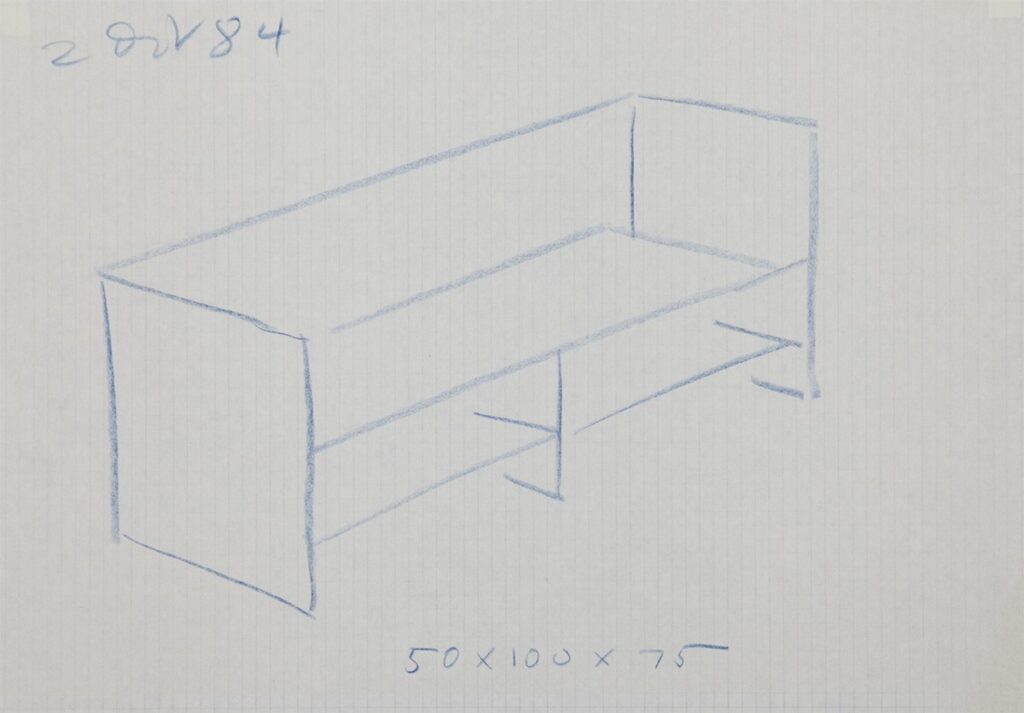
Although Judd had painted metal in earlier works in three dimensions, he begins to use a new technique for painted aluminum in both his art and furniture in 1984. His first use of bent, painted aluminum was for a large, outdoor, multicolored work commissioned for the exhibition Skulptur im 20.Jahrhundert (Sculpture in the Twentieth Century) which was installed in Brüglinger Park outside of Basel. This piece was the first of Judd’s multicolored works.
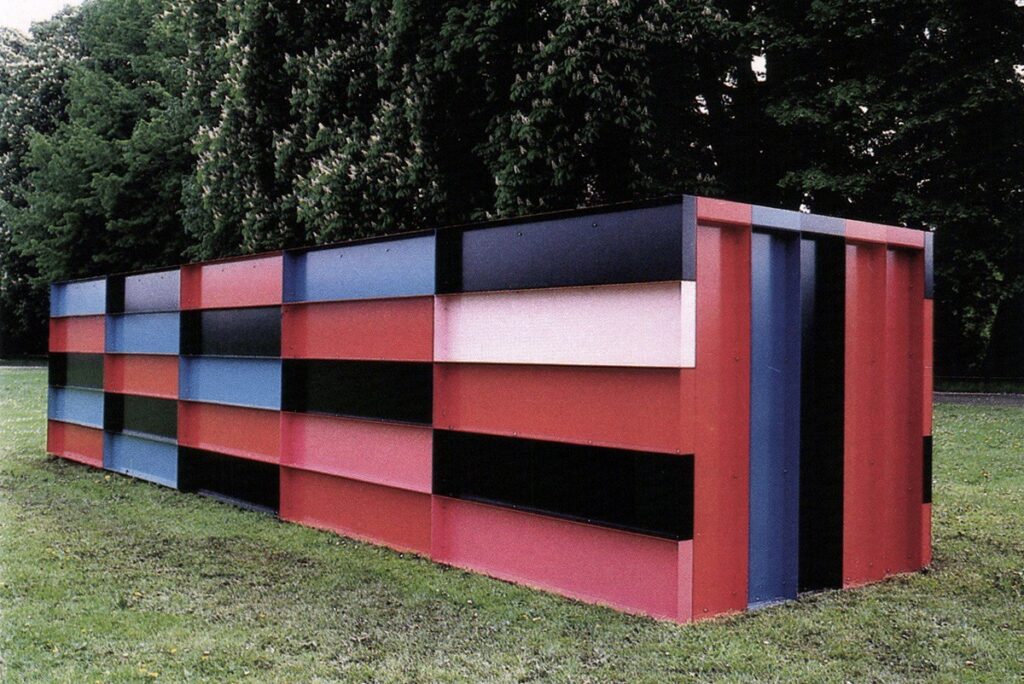
The development of the multicolored works came in part through Judd’s encounter with the furniture of designer and artist Andreas Christen. As Judd’s gallerist and friend, Gianfranco Verna wrote in 2007, “….Judd hit upon a potential solution [to the creation of a large work in metal for Brüglinger Park] in observing a bookshelf on the opposite side of the room during the meeting. A long-established classic, Andreas Christen had designed the shelf in question in 1964….It consists of aluminum sheet bent along the outer edge and held together with screws – a light and relatively thin material that obtains its stability through the bending of the edges. The machining and manufacture takes little effort. Judd was convinced that a large-scale work could be produced in a similar manner. He wanted to devise a form and a structure for such a work.”
Judd worked with Lehni AG, the producer of Christen’s furniture, to realize the work for Brüglinger Park. Lehni AG was founded in 1922 and was managed by Doris Lehni-Quarella from 1981 to 1998. From this first piece followed the development of Judd’s multicolored works and, in addition, his use of the same technique of bent metal, both painted and unpainted, for the fabrication of his furniture in brass, copper, and aluminum.
In 1984, Judd designed sixteen pieces of furniture in metal: chairs, benches, tables, shelves, and a desk, a stool, and a bed, in a number of individual colors. Judd selected the colors from the RAL color matching system, the same system that he used to determine the colors of his multicolored works. In the following note from Judd dated 24 August 1984, he lists a number of ideas for furniture in metal, some of which were realized, such as a bookshelf, and others, a standing writing desk in metal, which was not realized.
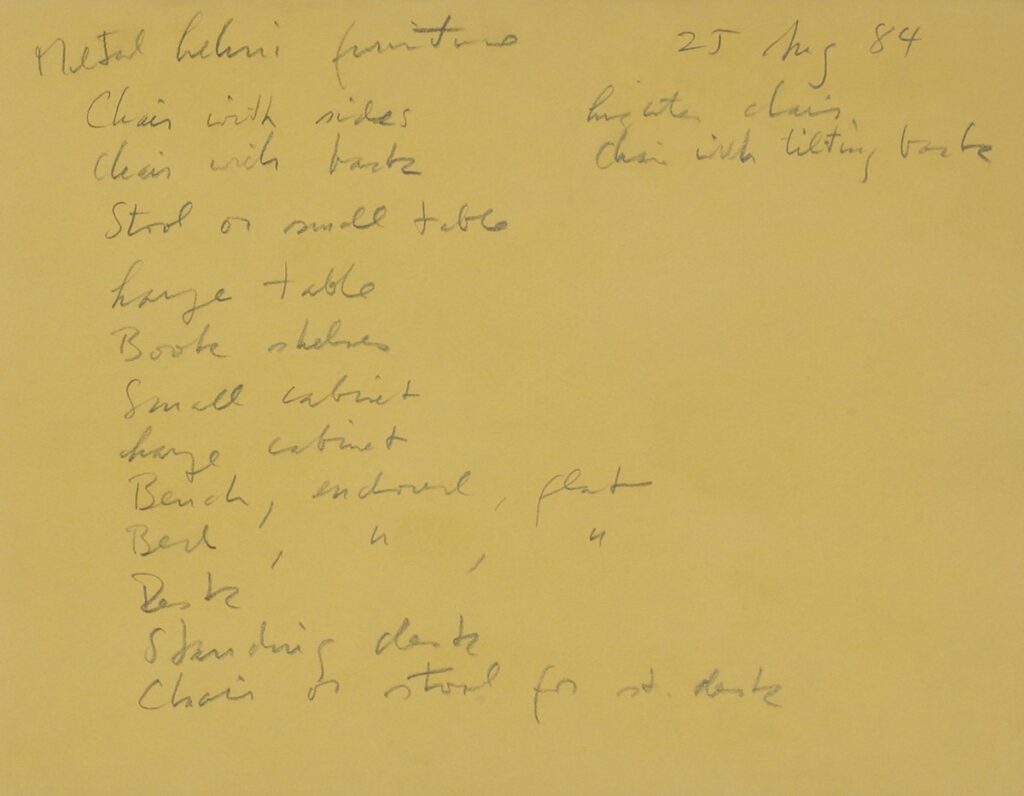
Lehni AG, the first fabricator of Judd’s furniture in metal, created schematic drawings from Judd’s sketches. Below, a schematic for a table in navy blue or “schwarzblau” (black blue) as Judd writes in German on the drawing. The realized table, seen below in copper, includes a bisecting shelf halfway from floor to the table-top.
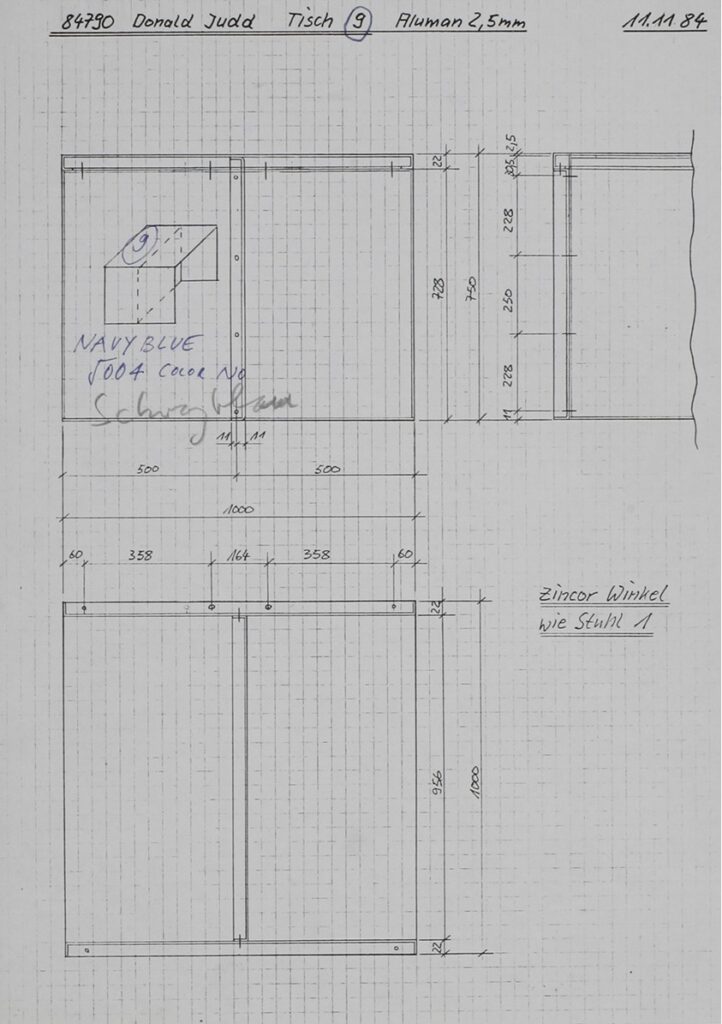
Judd avoided exhibitions in which his furniture was installed directly with his work in three dimensions, writing, “A work of art exists as itself; a chair exists as a chair itself. And the idea of a chair isn’t a chair.” In his 1989 exhibition Donald Judd: Architecktur at the Westfälischen Kunstverein Münster (April 16 – June 4, 1989), seen here, Judd installed his furniture alongside drawings of his architectural projects.
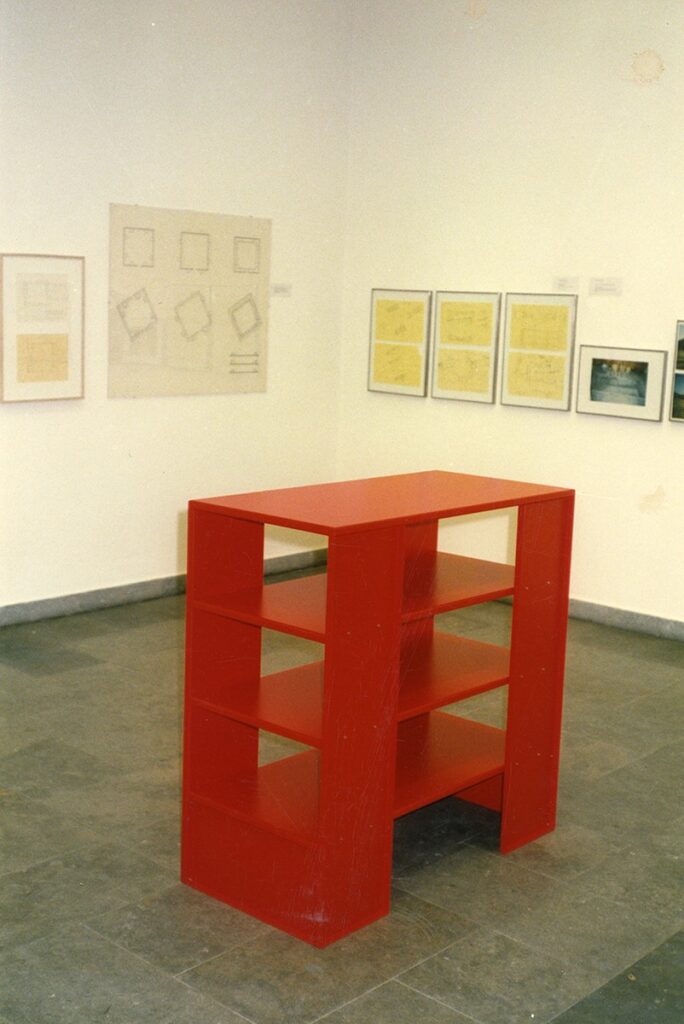
The installation of furniture and architecture together was acceptable. “The configuration and the scale of art cannot be transposed into furniture and architecture,” Judd wrote, “The intent of art is different from that of the latter, which must be functional. If a chair or a building is not functional, if it appears to be only art, it is ridiculous.”
Whereas Judd’s home and studio in Marfa, La Mansana de Chinati/The Block, contains many examples of his furniture in wood, it is in his Architecture Studio, the former Marfa National Bank Building, and the Architecture Office, where he installed numerous examples of his furniture in metal.
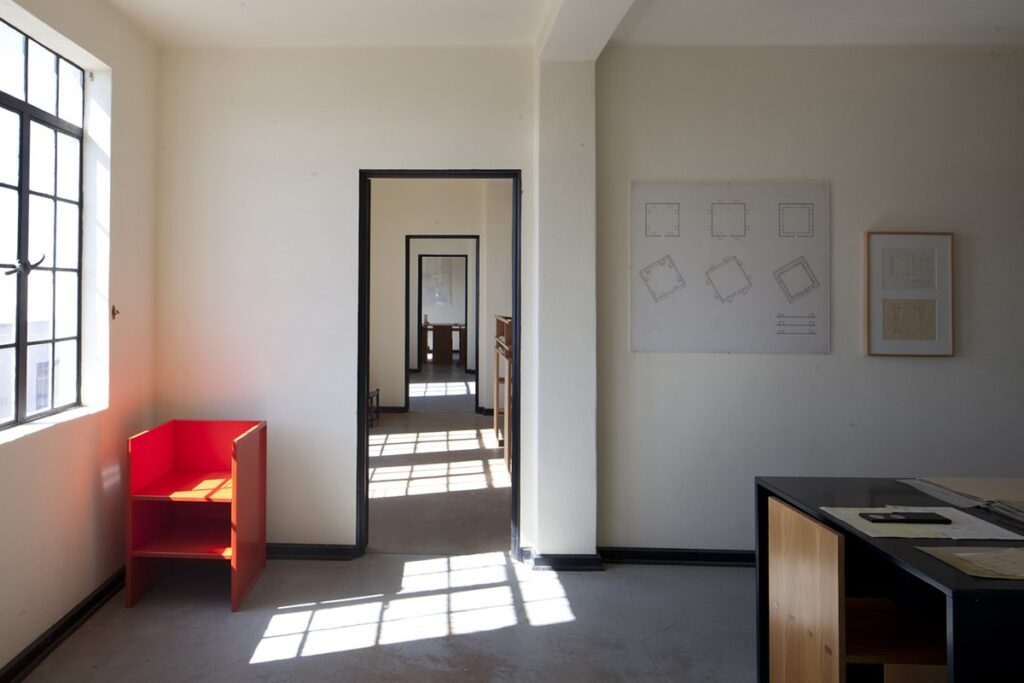
Judd’s furniture in metal continues to be made individually and is characterized by considerable handwork in the bending of the edges. For more information about please visit Donald Judd Furniture.